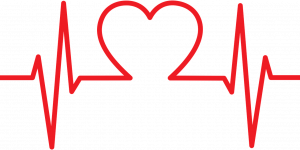
Today is World Heart Day, and so there is no better time to share information about congenital heart disease (CHD). Nearly 1% of children are born with CHD each year, making it a very common birth condition. Advancements in medical treatments for CHD allow >90% of diagnosed individuals to live long and fulfilled lives. However, individuals with CHD are at higher risk of neurobehavioral and psychosocial changes as they mature. Thus, neuropsychologists often follow children with CHD to promote optimal developmental outcomes.
Types of CHD
There are many types of CHD, and we roughly divide them between (1) cyanotic and (2) acyanotic subtypes. In short, cyanotic types reduce blood flow to the lungs, thereby reducing oxygenated blood that flows throughout the body. Acyanotic types don’t impact blood-oxygen levels, but reflect structural defects of the valve, atrium or arteries of the heart. Unfortunately, there are also mixed presentations, where a child has both structural change and reduced blood flow. To learn more about the different types of CHD, check out this website from the American Heart Association.
Risk Factors
The 3 biggest risk factors associated with increased risk for an infant to be born with CHD include:
- Smoking or exposure to tobacco smoke
- Diabetes (both Type 1 and Type 2)
- Genetic Conditions (DiGeorge Syndrome, Down syndrome, Turner syndrome, etc.)
Neuropsychological Differences
Children with CHD show structural changes to their brain’s gray and white matter as early as 25-weeks gestation. These brain changes remain until adulthood, even with early surgical intervention to repair the heart. So what does this mean for learning and behavior?
Children with CHD often have increased visuospatial challenges, which can be observed when putting together a puzzle or learning information through graphs, charts or maps. Fine motor skills can be weaker, and may impact handwriting, drawing or copying. Executive functions, or things like flexibility, problem solving, or impulse control are more difficult for children with CHD. Language abilities are somewhat variable, and we often see children with CHD struggling with expanding their vocabulary, sounding out words, or understanding nonverbal communication such as gestures or eye contact. Many children with CHD are also diagnosed with Attention Deficit Hyperactivity Disorder (ADHD).
Support Over Time
With known learning and behavioral challenges, neuropsychologists follow children with CHD over time, assessing their progress across all skill areas, and providing targeted recommendations for boosting skill weaknesses. Depending on the type of CHD, neuropsychologists can also explain what structural changes have occurred in the brain, and what parents and families can expect in terms of functioning as the child matures. No one has a crystal ball, but often we can help families be prepared if challenges do arise later in life. As with most conditions, earlier intervention is key. If you are looking for more information on these early childhood evaluations, pop over to my infant or preschool neurodevelopmental evaluation page to learn more about what these types of evaluations assess!
